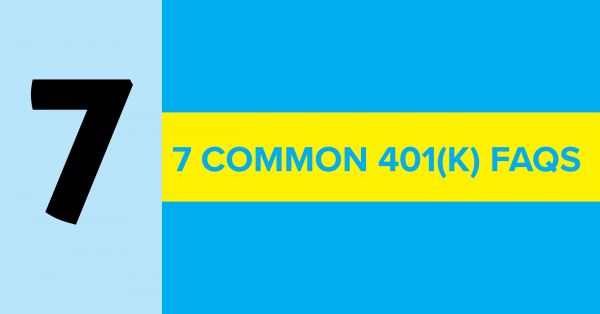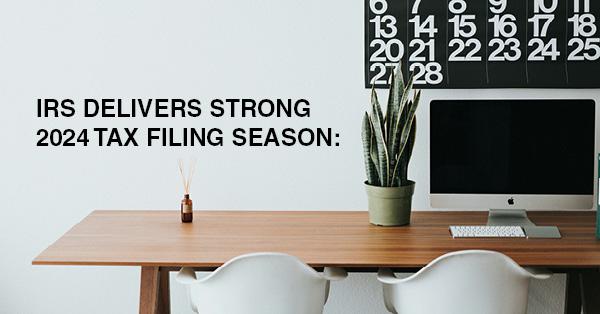7 Common 401(k) FAQS

Dontmesswithtaxes.com, August 20, 2019

401(k) growth: As of March 31, total 401(k) plans held an estimated $5.7 trillion in assets and represented more than 19 percent of the $29.1 trillion in U.S. retirement assets, according to the Investment Company Institute (ICI).
See Investment Company Institute, “The US Retirement Market, First Quarter 2019.” Sources: Investment Company Institute, Federal Reserve Board, and Department of Labor
That's an increase from 2010 when, says ICI, 401(k) assets were $3.1 trillion and represented 17 percent of the U.S. retirement market in 2010.
Data from ICI also shows that in 2016, about 55 million American workers were active 401(k) participants and there were nearly 555,000 401(k) plans.
I thought the figures would be lower, since surveys typically show that way too many Americans are savings only minuscule amounts for their retirement years. But even if you have an account, you still might have some questions.
So here are some frequently asked questions and answers to help you maximize both your retirement and tax savings.
As for all of you who have yet to open a 401(k) plan, check out these FAQs, too. The info might be just what you were looking for to help you decide to open one.
OK, Let's start this questions and answers session with the most basic of basics.
Here's an example from ICI on how that pays off over the years:
For a worker in a 25 percent tax bracket*, a $1,000 contribution to a 401(k) plan over 20 years will generate $2,405 in distributions and $802 in federal taxes. The same $1,000 contribution to a taxable account over 20 years will generate $1,809 in distributions and $603 in federal taxes. (Investment Company Institute, The Tax Benefits and Revenue Costs of Tax Deferral, September 11, 2012)
*This tax result example was created before the Tax Cuts and Jobs Act (TCJA) changed the tax rates for tax years 2018-2025, but you get the idea.
Meanwhile, your 401(k) money grows tax-deferred. You don't pay tax on it until your take it out if the account.
One quick note about those taxes. They are at the ordinary income tax rates, not the usually lower capital gains rates even though your 401(k) plan is invested in, say, a stock fund. Be aware of that difference so that you're not shocked at a tax bill when you're enjoying your golden years sipping mojitos on a beach.
You can avoid those ordinary taxes in retirement if your company offers a Roth 401(k) plan. Many now are.
Like Roth IRAs, you put money into these workplace plans after it's been taxed. But that means you don't owe tax on the money you take out later.
For 401(k)s in 2019, workers younger than 50 can put in up to $19,000 into their 401(k). Folks older than the big 5-Oh(no!) get an extra $6,000 catch-up amount, meaning they can max out at $25,000 by the end of this year.
Few of us will be able to hit those amounts, but we should put in as much as we can without jeopardizing our daily living expenses needs.
And you definitely should put in at least as much as your employer is willing to match. That's typically 50 cents on your plan contribution dollar up to 6 percent, giving you an added 3 percent of money to grow tax-deferred.
Employer matching of 401(k) contributions is free money. Don't pass it up and, if possible, maximize it.
If you take the money out before that age, you'll generally owe a 10 percent early distribution penalty in addition to the taxes due on the amount withdrawn
At the other end of the distribution spectrum, you must start taking money out of 401(k)s when you turn 70½.
These are known as required minimum distributions (RMDs) and are calculated based on your age and the amount of tax-deferred retirement savings you have.
7 Common 401(K) FAQS
- What is a 401(k)?
It's a defined contribution retirement plan offered by your boss where you, the worker, contributes and, in most cases, your boss puts in a percentage, too. The 401(k) gets its name from the section of the tax code which authorized the accounts back in 1978. - Why is it in the tax code?
Because it offers a tax-saving component. A traditional 401(k) plan lets you put money in your account, generally through direct payroll deposits from your paycheck. That money goes in before your income taxes are figured, meaning there's less money from which Uncle Sam gets a cut. - How much can or must I contribute?
There are limits on how much you can put into a 401(k) plan and they are adjusted annually for inflation. - When can or do I have to take out 401(k) funds?
You can access your 401(k) and not face any penalty if you wait until you turn 59½. - Are there exceptions to the 10 percent early withdrawal penalty?
Yes, there are some instances, generally classified as hardship withdrawals, where you won't face a penalty on the early distribution from a retirement plan.But they tend, for the most part to be rather specific and in some cases involved situations we don't want to happen.
They include:
- You must pay unreimbursed medical expenses.
- You buy medical insurance when you're out of work.
- You need the funds to prevent eviction from or foreclosure on your principal residence.
- You have a permanent disability, either physical or mental, that prevents you from getting a job.
- You are a reservist called to active duty.
- You have a court-ordered Qualified domestic Relations Order (QDRO) that mandates funds from your account go to a former spouse, child, or dependent.
- You are facing an IRS levy.
- You have died and your beneficiary gets the money.
Note, too, that while penalty-free hardship withdrawals are allowed by law, your employer is not required to provide for them in your plan. Most do, but double check.
And even if you do have an allowable penalty-free withdrawal circumstances, you'll still owe the tax on the tax-deferred funds you take early.
Rather than take an outright distribution, you might want to consider a 401(k) loan. You'll have to pay the money back, but at least you avoid the 10 percent penalty as long as you continue to work for your company during the loan repayment period.
- Can I contribute to both a 401(k) and an IRA?
It's OK for an active 401(k) participant to also contribute up to the maximum to a traditional IRA. Note, however, that your contributions to a traditional IRA may not be fully deductible depending on your income and marital status. - What are my options if I leave the job where I have a 401(k)?
You have several:- If you employer allows it, you can leave the account there. Some reasons to do so is that you like the fund your money is in. Your new company doesn't have a 401(k) option. You haven't had time to research where you want to move your account.
- When you are ready to move an old 401(k) you can have it transferred to your new company (if, unlike in the reason above, it offers such plans) or to an IRA.
- In moving an old retirement account, make sure you do so via a called a trustee-to-trustee transfer. This will ensure that you never get your hands on the money. That's important because if you do and you're younger than 59½ you'll have to pay the penalty and tax on the money.
Where you do take the money, even if you eventually put it into another qualified retirement account, known as a rollover, your old account holder must take 20 percent off the top for federal taxes (and more for state taxes, too) before giving you the money.
If you put the remainder into a qualified retirement plan within the required 60-day transfer period, you can get the taxes back when you file your tax return the next year, but you'll have lost the earning power of that amount.
A trustee-to-trustee transfer, however, means the money goes from one retirement plan to another, sidestepping potential penalties and taxes.
If you want to move your 401(k), first talk with your former employer and the place where you're sending the money to ensure the process goes smoothly.
Finally, if you move a 401(k) don't freak out the next year when you get a Form 1099-R. The former account administrator has to file this document with the IRS letting them know you took the tax-deferred money.
But it doesn't mean you owe taxes. Note the code in box 7. If you completed a direct trustee-to-trustee transfer the letter G will let the IRS know that the money was never in your hands so you don't owe any taxes.
These common 401(k) FAQs should answer the most common questions about these workplace retirement plans. If you have more, talk to your company's plan administrator, as well as your financial and/or tax adviser.




